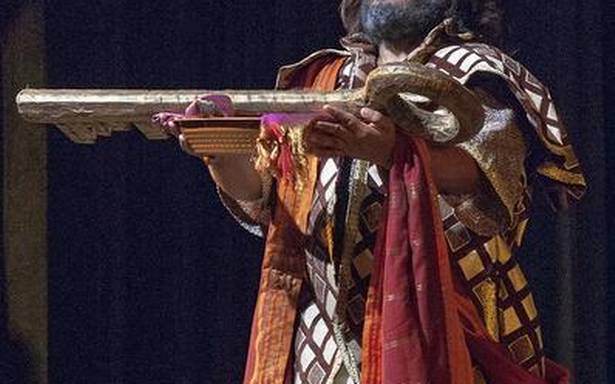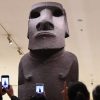ART NEWS
The real magic is missing
The pandemic may have made digital the new normal, but artistes can’t wait to go back on stage
Reality is constantly changing. It is not about living in a world with lesser trees, rising sea levels, faster trains, and slimmer computers. Change constitutes more than the physical, it is about the impact of the physical. This is an area that has been addressed by the performing arts. Art engages with humanity, and when artiste and audience cohabit a real space, they experience a heightened emotional state. Space and time are not constants, nor is a performance. For instance, playwright Mohan Rakesh’s Ashad Ka Ek Din, performed in the 80s will be starkly different from a 2018 production of the same play. ‘Mathe Malayadhwaja’, the daru varnam in Khamaj rendered 20 years ago will not be how a musician performs it today. Will contemporary dancers perform ‘Viralimalai Kuravanji’ the way the trio of Sudharani Raghupati, Padma Subrahmaniam and Chitra Visweswaran danced it in 1986? While physical changes — trees, sea, train, computer — have had a bearing on the creation of art, time has transformed its emotional nature. Art reality, therefore, is a dynamic, three-dimensional creature. Its breathing apparatus is time, space and human interaction.
With the pandemic, physical spaces have shut down and nearly all art has moved into the virtual realm. In an unusual situation such as this, the digital medium could well be seen as a boon, allowing an artiste to experiment and push the frontiers of his or her art. But how do various art forms lend themselves to the virtual medium? How does the art of theatre, which is an inseparable relationship between space and time, re-vision itself for such a challenge? How does Indian music, which rests largely on manodharma, refashion itself for the online space? Doesn’t this new environment allow artistes to manipulate perspective? In other words, “mimesis” gets told rather than shown.Vinay Kumar, artistic director of performance group Adishakti in Puducherry, says that what Covid-19 has done to theatre and theatre education is unprecedented in modern history. “It has destroyed the notion of a collective. “For an artiste,” says Vinay, [this crisis] is more about creative survival and not so much about physical survival.” Artistes have been given a chance to pause and rethink their art, he says but “we need to think of new narrative methodologies”. For Nimmy Raphel, assistant director at Adishakti, “The digital medium has forced us to look into possibilities that were not there before.” For Nimmy, digital is good for classes and workshops, but certainly not the option as an actor. “Theatre validates itself through the performer. You work with co-actors, there is a synchronisation of energy between us, which is palpable for the audience. To even think that the stage is a far reality is heartbreaking.”“The online medium has advantages, but it comes with its own set of challenges and difficulties,” explains Abhilash Pillai, assistant professor of the National School of Drama in New Delhi. He explains that the NSD has students from all corners of India, like Nagaland, Ladakh, Kashmir and more. They also belong to different economic backgrounds. And online classes are not merely about economic privilege, but also about space. “Let’s say we are working on Romeo and Juliet. I ask someone from an underprivileged background to discuss Juliet’s role with me. It is impossible for her to do it if she is living in a one-room place with the rest of her family. It can be very traumatic,” says Abhilash. Recognising these limitations, NSD, through its online classes, has been teaching coding to students as well as the theory of theatre. “Theatre deals with all the five senses. You cannot touch, smell or taste in the online medium.”
Abhilash recalls how during the production of a play, rehearsals would start at 8 a.m. and end at 6 p.m. But students often chose to rehearse till 3 a.m. “In the digital space, that passion and rigour cannot be replicated. We cannot have intense classes. It is all a transactional process. Universities are trying to keep students and teachers engaged. That is how much this medium can do.”Kuchipudi exponent and guru Vyjayanti Kashi talks of earlier challenges. “Kuchipudi faced a huge threat from theatre. We have also faced it when television and social media came into the picture. I am very positive that we will tide over this situation too,” she says. The digital medium, she says, is best suited for lecdems, workshops and seminars. “In the last six months I have listened to some wonderful and rich talks. I organised an 18-day international seminar and the papers presented were extraordinary. In the online medium, there is no need to be rigid about time, and that makes a good difference.” While the online space is certainly not ideal for creative work, she worries about the mediocrity the space is now inundated with. “It is time to read, to think; it is the best time for a seeker.” Time for an inward journeyRenowned violinist and sought-after mentor R.K. Shriram Kumar also sees it as the best time for an artiste’s inward journey. “Live performances are important, drawing energy from the audience is important, but passion, shraddha, and integrity to your art is most important. Whether you are performing for five people or 5,000, your commitment must remain unwavering. I think that is the biggest lesson to be learnt in these times. All the energy must be contained within you,” says Shriram. “It is the time to set aside various apprehensions and just love your art.”Interestingly, most artistes we spoke to were certain that the online medium does not work as a performance medium. “I am uncomfortable even doing classes. It just doesn’t work for a form that is based on manodharma. It has to be a live interaction where a lot of learning happens through exchange of ideas. I restrict online classes to revising kritis,” says Shriram.For Vinay, digital is a cheap imitation of cinema. The struggle for a theatre actor is to be as far as possible from cinema. The core value of theatre is to be on stage. Nimmy agrees. “In theatre, there are no boundaries as there are in cinema. So the actor moves into the zone of a musician, a lighting technician, a backstage worker and so on. We end up carrying multiple creative expressions and emotions. Digital theatre can at best be the poor cousin of a well-made film. It cannot be theatre. The craft and language are different,” she explains.
Digital is here to stay, but almost all practitioners believe it can never replace live theatre, music or dance. “It is a phase and it will pass. We will return to the old normal,” they say. Digital is best for documentation, says Akshara K.V., playwright and director of theatre school Ninasam. “Digitalisation itself is manipulation of perspective. What is in the can may be fruit juice. But it is not the fruit, is it? The life of all performing arts is in the midst of people.”











